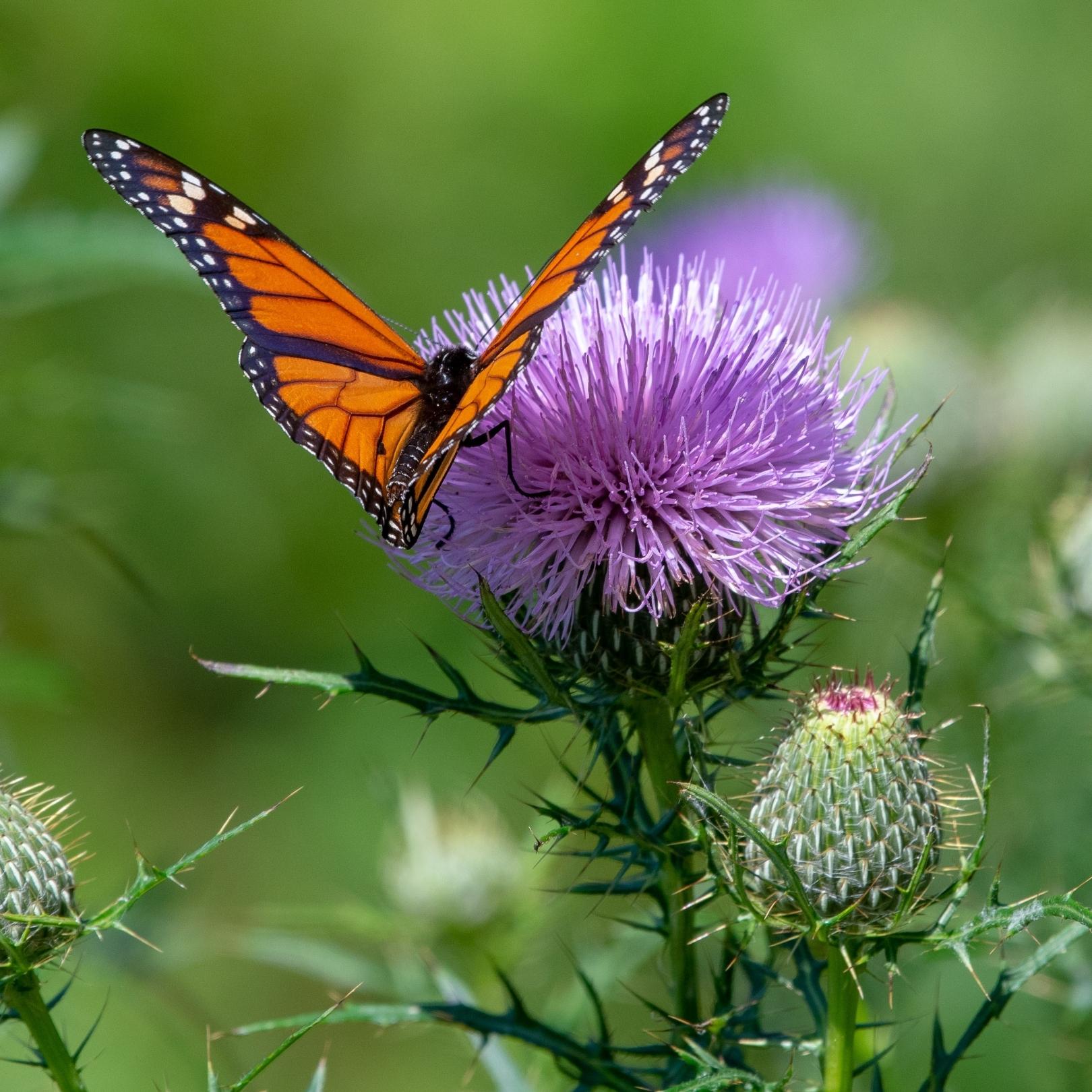Blog
Spotlight on Native Plants: Field Thistle

by Jason Neumann, Public Programs Manager
Who would intentionally plant thistles in their garden? If you overlook its spikiness, field thistle has a lot to offer. Field thistle, Cirsium discolor, is one of 58 species of thistles native to North America.
As a biennial or short-lived perennial, field thistle may take two to three years to bloom, but the wait is well worth it. For the first year or so, the leaves of this thistle grow in a basal rosette, a circle of leaves at the base of the plant.
The next year, the plant will spike up to 5 to 7 feet tall, launching many, nearly 2-inch wide pink to lavender flowers that billow out from artichoke-like bases.
Like other plants in the sunflower family (Asteraceae), each of field thistle’s flower heads is made up of 100 or more tiny flowers. These flower heads produce abundant nectar, attracting a profusion of butterflies, bees, hummingbirds, moths, and other life.
Individual plants will bloom for about a month in late summer, a time when few other wildflowers are blossoming.
As its name implies, field thistle is a species of open land. In the not so distant past, field thistle would colonize overgrazed areas, its spikey leaves discouraging animals from grazing, allowing those areas to recover.
Growing well in full sun to partial shade and content with average to dry soil moisture, field thistle is easy to grow in your yard provided you remove competing vegetation.
While field thistle is easy to grow, it tends to appear rather the worse for wear toward the end of the growing season. As a biennial, the plant dies after it blooms, but, in late fall becomes interesting again as goldfinches devour the seeds.
Field thistle’s seeds fall close to the original plant. With minimal care, you can assure you have some of this ecologically useful plant growing for years to come.
Warning! Beware of Canada thistle, Cirsium arvense, an invasive perennial thistle with creeping roots that forms large, dense patches. Canada thistle grows 3 to 4 feet tall and bears small half-inch wide pink flowers.